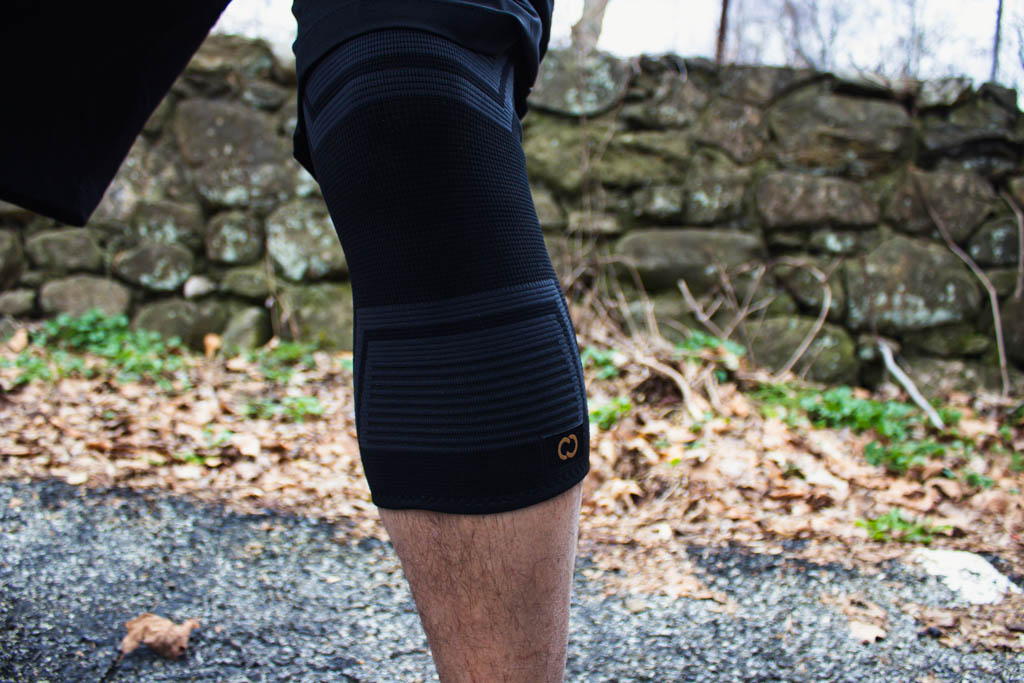Products You May Like
It was my very first solo hike after completing a week-long survival training course. I had my ultra light pack, my supplies, my layers. I felt invincible. I was ready to tackle anything nature threw at me.
So, when I started feeling an intensely sharp pain in my right knee, I wasn’t too worried. I had first aid training and didn’t recognize the symptom. But that pain got worse and worse and by around the 4th or 5th mile, I could barely walk on that knee. Uh-oh.
This wasn’t a “187 Hours” situation. But it was pretty bad. I limped off that trail 3 hours later than I planned. I got home and didn’t treat it.
For the next few years, I repeated this process: started a hike, intense pain on either my right and then later my left knee, limping for days until it just got better. I loved hiking – and apparently pain – because instead of seeking professional medical advice, I read Born To Run, switched to barefoot hiking and started wearing knee braces. It worked. Knee pain got better but never went away.
A few years after that, I started hosting others on hikes. And over the years, others would experience the exact same phenomenon. Was my knee pain contagious? What the heck is going on? And why did braces help?
The knee pain got worse the more miles I put on my knees. 2 miles was the limit before intense pain set in.
When I started dating an NP, she diagnosed me with arthritis. That didn’t feel right. I visited an orthopedic doctor and his diagnosis was that I simply wasn’t stretching enough. That kinda felt right, but incomplete.
Finally, I started working with a personal trainer who figured it out.
Since I had never stretched or recovered after my hikes, my IT band was extremely tight. Like, extremely. And after years of using the muscles surrounding my knees to overcompensate for an underutilized IT band, the result was inflamation. That’s why compression helped.
My trainer put me on an intense stretching regimen and program to strengthen all the surrounding muscles with focused load bearing (weighted squats, dead lifts, etc).
The results were dramatic and life-changing. Stretching doubled the number of miles I could cover pain-free. And compression braces practically eliminated the pain entirely regardless of mileage.
Icing and additional compression at home with a Copper Compression knee brace plus rest for recovery allowed me to be back on my feet next day no problem.
Nearly 15 years after that first intense pain, I’m still hosting group hikes. And before every single hike, we invite our entire group to do stretches.
And after our hosts and I started doing that and monitoring our guests’s hydration and pace better, no other hiker has discovered knee pain on any of our hikes. Except, of course, anyone who skips stretches.
Here’s the stretches we do with our groups prior to hikes to prevent knee pain:
- World’s greatest stretch. (Looks like a deep lunge. Stretches pretty much everything, but it’s for hip flexors).
- In a deep squat, push out with elbows. Stretches glutes and hams
- Quad stretches by holding your foot behind your back. Either standing or sitting.
- Pigeon pose. (Looks like you’re lying over on top of your folded leg and great for IT band.)
- Toe touch, either standing or sitting. (Stretching your hamstrings by bending over).

Here’s what to look for in a compression brace:
- I’m doing thousands of steps in braces, so I like the rubbery grips on the inside to keep my braces in place vs sliding down.
- I like to fold a brace down over itself or up since braces need to be snug over the knee, not my quad or calf.
- Because most braces are neoprene or some kind of rubber, they’re great for added warmth in the winter. Especially if you’re like me and prefer shorts 11 months out of the year.
- For easier slide on/slide off after a sweaty hike, I’ll often wear a cotton brace as my baselayer. They don’t impact the grip.
- Always carry ACE wraps because they’re an awesome backup.
__
Al Berrios is Founder/GM of Outerthere.com, an NYC-based outdoor adventures trip operator.
